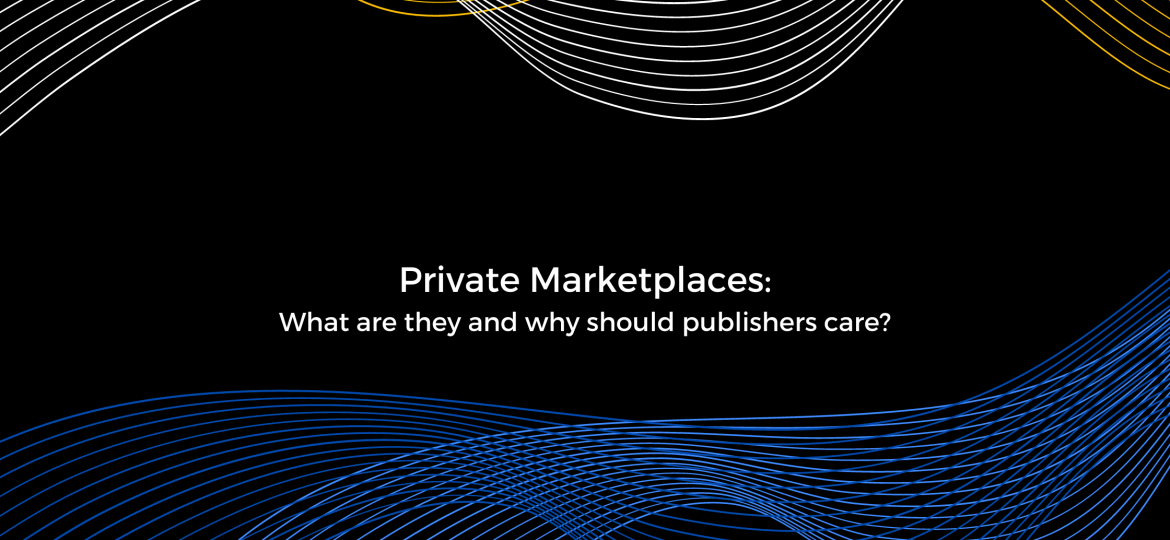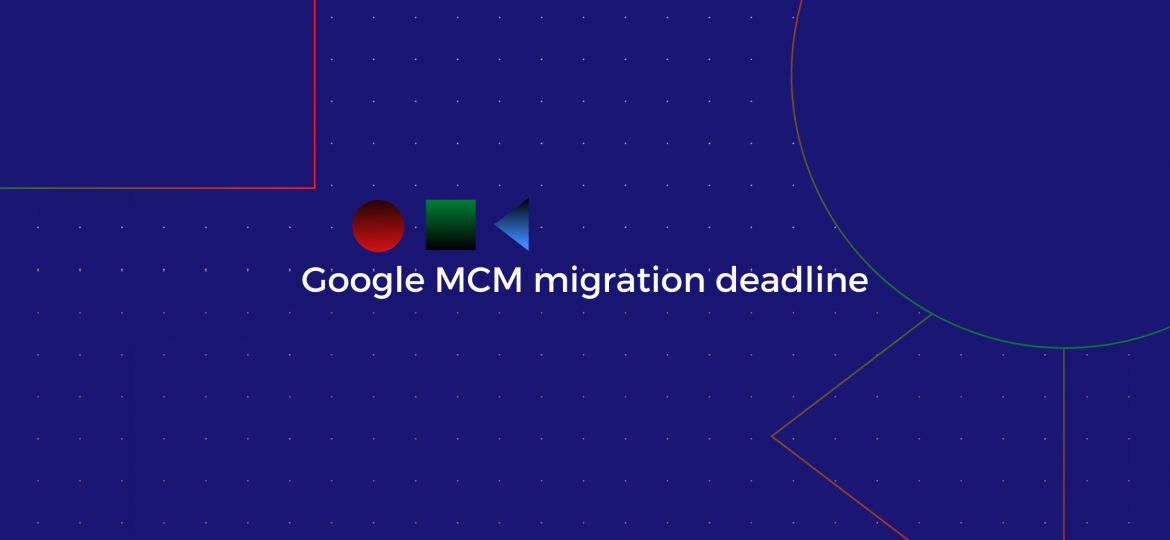As we enter into 2022, the January blues are imminent. After the exciting and lucrative holiday season, the results in the first quarter of the year are doomed to turn our smiles upside down. Seasonality is a powerful driver for ad revenue fluctuations and publishers are better off understanding the principles behind it. Various factors such as advertising budgets, consumer buying intent, events that bring higher traffic, all play into the final results. This article will explain what seasonality is, how it influences ad revenue and how publishers can prepare in order to optimize their performance during each part of the cycle. What is Seasonality? Google defines seasonality as any predictable fluctuation or pattern that recurs over the calendar year and further divides it into cultural, commercial, and ad-hoc events. Cultural seasonality is caused by annual holidays and celebrations such as Christmas and Ramadan. Commercial seasonality revolves around events such as Black Friday/Cyber Monday. Examples of ad hoc events that cause seasonality are the Olympics, elections, and even certain notorious TV productions. It is important to take your audience into consideration and what influences their behavior so that you can take advantage of opportunities around seasonality. During seasonality peaks, advertisers are willing to buy more inventory and/or pay more for it. This drives RPMs up. At the same time, users are more likely to browse the internet during such periods, which drives traffic and impressions up. These factors both contribute to seasonality effects in publisher revenues. Quarterly seasonality trends and…
Ad Tech
If you are new to programmatic, all those three-letter acronyms might be a bit confusing. In this article, we will explain what supply- and demand-side platforms are, what they are used for and by whom, as well as the advantages they bring, and how they fit within the ad tech ecosystem. What is an SSP? Supply-side platform, sell-side platform, or SSP, is a piece of software that is designed to help publishers monetize their ad space programmatically. They connect publishers to multiple ad exchanges, ad networks, and DSPs at the same time, thus increasing the number of bidders for their inventory and boosting yield. SSPs allow publishers to set price floors, determine rules for their inventory, create direct deals, collect and analyze campaign data. Benefits One of the main advantages of using an SSP is the better data that publishers get access to. Information such as which bidders participate in the auctions, what your best placements are in terms of profitability, can be used for improved yield optimization. Audience data analytics can help enhance targeting and package inventory to negotiate better deals with advertisers. Another important aspect of using an SSP is the granularity of control that publishers get over their inventory. Setting price floors for specific buyers and/or channels, blocking certain advertisers, or allowing only selected buyers to a specific portion of your ad inventory are just some of the options available to publishers. Last but not least, the possibility to get so many ad exchanges, networks, and DSPs…
As programmatic opportunities are evolving, publishers have more and more ways to put their inventory on the market. We’ve looked into Preferred deals and Programmatic Guaranteed already and in this article, we’ll dive into Private Marketplace deals. What is a Private Marketplace? Private Marketplaces are also known as PMPs, closed or invitation-only auctions, and private auctions. The concept is that a publisher, or a few of them, invite advertisers/demand partners to an exclusive real-time auction for their premium inventory. Publishers often package their inventory based on various audience and impression attributes, content type, etc., thus making it more attractive to buyers. PMPs are more transparent and safe than traditional open auctions as publishers are fully aware of who will be bidding and are upfront about the price they expect by setting respective floors. Advertisers, on the other hand, have the advantage to know exactly where their creatives will appear. How do they work? Private Marketplaces combine the best of traditional direct deals and programmatic. Typically, PMPs involve a direct relationship with buyers, exclusive premium inventory that is only available at the specific private marketplace, transparency of the deal, as well as the efficiency of programmatic automation of the sales process, and the potential to optimize and target distinct audiences in real-time. All details of the deal are negotiated in advance between the publisher and the buyers, including price floors and type of inventory. To set up a PMP deal, the publisher’s inventory is directly plugged into the advertiser DSP (demand-side…
Display ads have been the king of digital advertising for quite a while. But then native advertising came into play and changed the game. Advertisers are always looking for ways to get to the user more efficiently and native ads offered a non-intrusive way to customers’ attention. While display ads still serve an important marketing purpose, they are now only one of the possible approaches. Thus, advertisers may be looking for both native and display ad inventory, depending on their goals, and publishers need to decide how to build their ad inventory in this ever-so-competitive landscape. Display Advertising Often referred to as banner ads, display ads are still the most popular type of digital advertising nowadays. The rectangular boxes with advertiser message that links to a landing page are your typical display ads. They come in various sizes and formats, such as text, image, and video, some may even be interactive. Display ads have evolved over the years and offer more impactful ways of addressing the audience. Users, on the other hand, have become so used to them that they may often experience the so-called “banner blindness” – something advertisers are trying to fight. Enter native ads. Native Advertising While typical display ads are easy to distinguish and pinpoint, native ads often look just like the rest of the content on the page. You can recognize them from their label – most often “Sponsored”, “Promoted”, or “Recommended”. Native ads are designed to blend with the elements on the website and…
Digital advertising and the whole ecosystem around it have evolved quite a bit over the years. Volumes have increased dramatically, and so has complexity. Publishers and advertisers alike need more tools and technology to manage campaigns efficiently, track results, plan, optimize, and achieve their revenue potential. Ad servers are one piece of the puzzle that we will explore in this article. We will cover what ad servers are, how they work and what types are out there, and finally how to choose one to best suit your needs. What is an ad server? Ad servers are the piece of ad technology that is responsible for the management, serving, and tracking of digital ad campaigns. They are used by website owners, ad networks, ad agencies, and advertisers, and can be built in-house or managed by a third party. Often, ad networks and exchanges will offer them as part of their services. Ad servers are used to place ads on a website and make real-time decisions about what ad would be shown to which user, based on multiple factors such as targeting, budget, relevance, and revenue. They also collect data about user behavior related to the ad for further campaign analytics. How do ad servers work? Ad servers have a key role in digital advertising and are involved in most parts of the process of selling and placing ads, including further analytics. Once a user lands on a site (or mobile app) that is being monetized through ads, the ad tag(s) on…
Programmatic Direct provides publishers with an automated way to directly sell and/or negotiate their inventory. There are three types of deals within this category: Preferred Deals, Programmatic Guaranteed, and Private Auction. They each have their specifics and are used to meet various seller and/or buyer needs. In this article, we will take a closer look at Preferred Deals, their advantages, and disadvantages, as well as their differences from Programmatic Guaranteed and Private Auctions. What is a Preferred Deal? Preferred Deals are direct deals within which the publisher agrees to provide exclusive first-look to specific inventory in exchange for a predetermined CPM rate. The terms are negotiated via Google Ad Manager and the price is fixed, no auction takes place. The advertiser is not obligated to buy the impressions, hence the alternative name of this type of deal: “programmatic non-guaranteed”. If the advertiser decides he is not interested in the inventory, it goes to an open or a private auction. The publisher can initiate the negotiations with a single advertiser via single or multiple buyers. He can decide to seal the final deal with one or more of those buyers. Advantages of Preferred Deals Predictability: Publishers get to select the buyers they negotiate with and set a price for the deal they are comfortable with. In this way, they can make much more precise revenue expectations and plan accordingly. Security: Having the option to choose the advertisers for this type of deal creates a transparent and secure environment where the risk…
Back in 2015, Google launched the open-source Accelerated Mobile Pages (AMP) Project for a faster, open mobile web. In 2018 the project moved to an open governance model and then in 2019, it joined the OpenJS Foundation Incubation Program. Today you can use AMP to build a number of things, including websites, web stories, ads, and email. This article will focus on AMP ads – what they are, their advantages and disadvantages, as well as a few best practices if you decide to give AMP ads a shot. What are AMP ads? AMPHTML ads, also known as AMP ads, combine the technology of the standard HTML ads with that of AMP. This results in very flexible, fast, light, and safe ads that can be delivered on both AMP and non-AMP pages. AMPHTML ads are created only with predefined HTML, CSS, and JavaScript libraries from the AMP Open Source Project, eliminating the possibility for running obscure JavaScript codes and improving security through auto-verification. Three of the more popular AMP ad formats are carousel (ad with more than one image in a carousel, auto-plays when in view), video parallax (a video displayed on top of a banner, the ad plays only on user click), and lightbox (ad expands only on click, uninterested users get more of the website content in view). Publishers interested in video advertising can serve both in-stream and out-stream video ads in AMP. Advantages AMP ads come with multiple advantages. Let’s see what they are, starting with the most…
With programmatic digital advertising on the rise in the last few years, the opportunities for publishers and advertisers alike are getting more and more robust. There are several types of deals that fall under the “Programmatic Direct” deal type: programmatic guaranteed, preferred deals, and private auctions. In this article, we will be unfolding the ins and outs of Programmatic Guaranteed. What is Programmatic Guaranteed? Programmatic Guaranteed is an attractive type of campaign to both publishers and advertisers. The sellers get a guaranteed revenue stream, whereas the buyers lock in the exact audience they want to reach. Both sides get predictable results from the deal and mitigate uncertainty. Programmatic Guaranteed allows publishers to negotiate with a buyer the price and terms for specific inventory that would be reserved only for that buyer at a fixed price. Audience targeting happens through device ID or cookies and advertisers get a very precise match to what they are looking for. The deal includes impression volumes and price, frequency capping, what ad sizes and formats will be used, as well as the campaign timeframe. All of this is coded into the Deal ID and handled fully automatically (this is why Programmatic Guaranteed is often confused with Automated Guaranteed, which, however, does not use Deal ID, but rather displays the ads via an ad server API). For Programmatic Guaranteed to work, publisher and buyer Data Management Platforms (DMPs) need to first sync. This allows advertisers to find the right audience and then offer a guaranteed price…
Interstitial ads have become quite popular in the last few years, despite the penalties set by Google back in 2015. They are most popular on mobile and in gaming apps, however, in 2020 Google also launched interstitials for the web (check out this article for more information on them). Since then, the format has gained more traction and has its fans and critics. Let’s see what exactly are interstitial ads, what are their pros and cons and some best practices for their implementation. What are interstitial ads? Interstitials are essentially full-screen ads that can be displayed on desktop or mobile web, or in-app. Normally, they appear at transitions points (such as navigating away from a page or after pausing a game) to minimize intrusiveness. Interstitials can be a variety of types, including, but not limited to images, video, rich media, and text. They are characterized by high click-through and CPM rates. However, publishers need to use them in compliance with the Better Ads Standards, Google’s Search Standards, Google’s recommended implementations, and best practices in order to stay away from penalties. A compulsory element of interstitial ads is having a clear exit/close button. Web interstitials also have a fixed frequency cap of one ad being shown to a user per hour per subdomain. Ads should be preloaded in order to avoid latency when being displayed to the user and to ensure a positive user experience. Advantages Let’s take a look at why this ad format is so popular among publishers. High…
In June this year, Google revealed that they will be discontinuing the Scaled Partner Management (SPM) feature by the end of September 2021, which would mark the end of the transition to the brand new Multiple Customer Management (MCM) model. In an update from yesterday (14 September 2021) Google announced that they’re going to be pushing the deadline back to 31 January 2022. The change is due to multiple partners having challenges migrating to MCM in time, while future plans also include providing more details around Google’s plans on the retirement of SPM. The previous deadline of 30 September 2021 is now going to be the last available date for child publishers to be added to SPM. After that, all new entries will need to be added directly to the MCM feature. Source: Google New MCM transition timeline Google is also breaking down its MCM migration schedule into five separate steps to maintain a balanced pace across the network. Managing partners will be required to transfer a minimum of 15% to 30% of their managed revenue, varying between the different stages. Failing to meet these new benchmarks will result in a certain portion of SPM traffic being blocked from accessing Ad Exchange demand, with the percentage being larger as we approach the final deadline. Other demand sources will not be impacted by the penalty. Source: Google Our progress so far We’re happy to say that we’re currently near 100% completion in migrating all of our child publishers to Multiple Customer…











